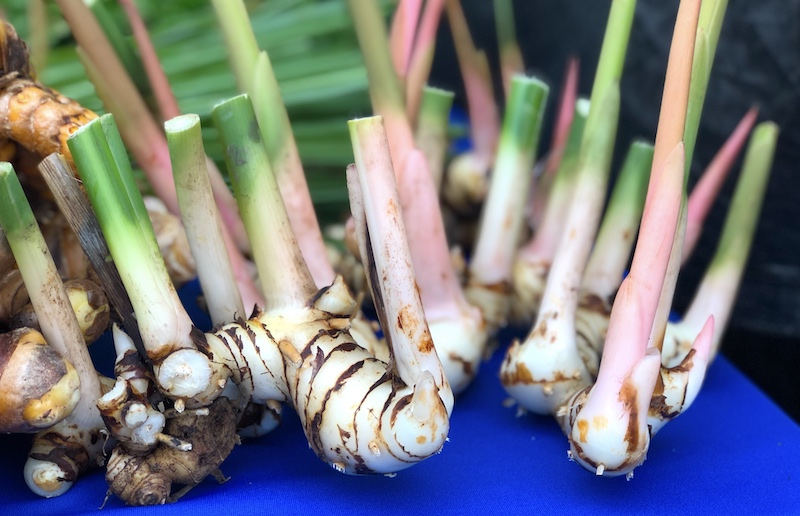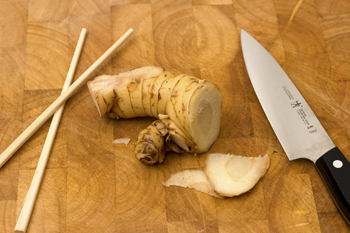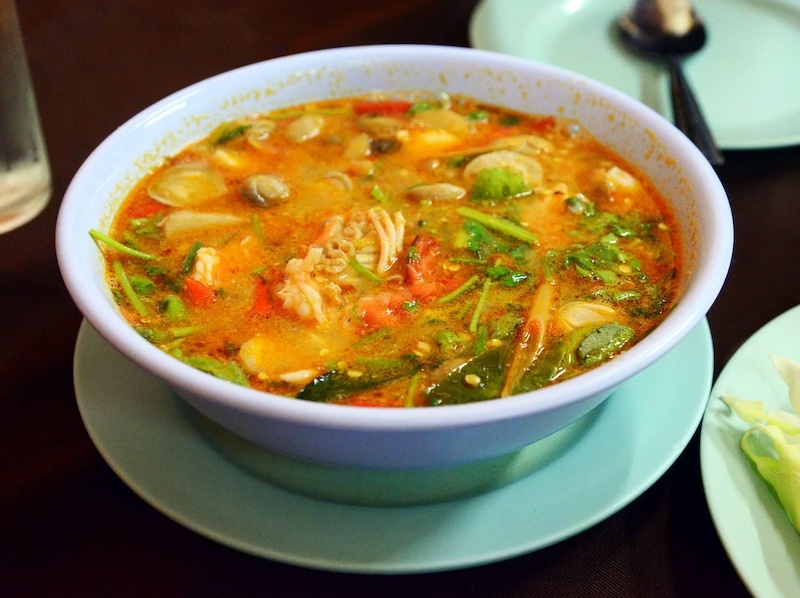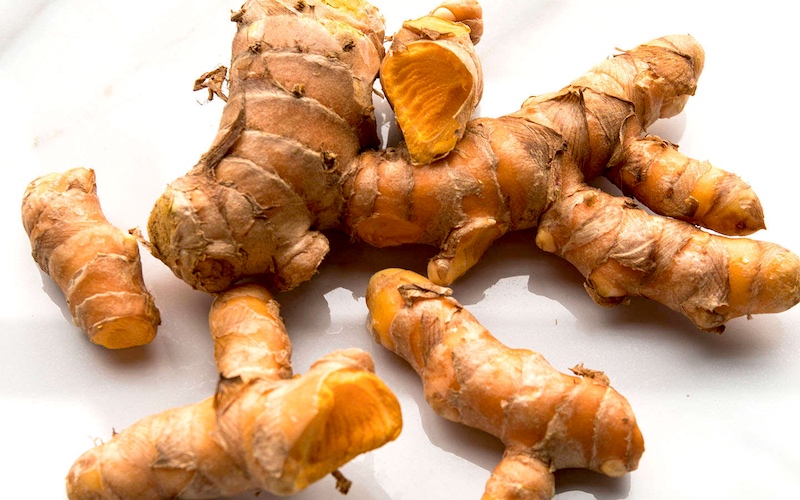
In Season: Galangal, Lemongrass and Turmeric
In the most recent Beaverton Farmers Market newsletter, market manager Ginger Rapport offered a primer on using galangal, lemongrass and turmeric. Normally thought of as exotic ingredients, they've been adapted to grow in Oregon's maritime climate and are now being grown by several local farms. Find them at your neighborhood farmers' market, as well as at Rubinette Produce or other stores that carry produce from local farms.
Galangal
This flavorful tuber (top photo) is the spicy cousin of ginger and is prized in Thai cuisine for the citrus-like flavor it imparts to soups and its burst of herbal heat in curry pastes. Usually found in Asian grocery stores, you can also find organic galangal at Denison Farms’ booth this Saturday alongside fresh lemongrass and turmeric.

Galangal’s knobby tubers are prepared much like ginger. To be recipe-ready, they are usually peeled and then minced, sliced or grated. It is possible to substitute ginger for galangal when it is unavailable, but we recommend you make the effort to use this zingy aromatic when it is in season. According to Cook’s Illustrated magazine, galangal’s distinctive piney flavor is best used in savory dishes as opposed to sweet dishes where ginger is a better option.
 Since fresh galangal is not available all year round, we recommend putting a stash of peeled fresh tubers in your freezer for use when it is out of season. While you are thinking in advance, we recommend freezing lemongrass as well. Together, they provide the exciting flavors required for a variety of delicious dishes including soups, curries and sauces. To freeze lemongrass, trim stalks to the bottom six inches, then transfer to zip-lock bags and freeze.
Since fresh galangal is not available all year round, we recommend putting a stash of peeled fresh tubers in your freezer for use when it is out of season. While you are thinking in advance, we recommend freezing lemongrass as well. Together, they provide the exciting flavors required for a variety of delicious dishes including soups, curries and sauces. To freeze lemongrass, trim stalks to the bottom six inches, then transfer to zip-lock bags and freeze.
Galangal is a critical ingredient in the popular hot and sour Thai soup known as Tom Yum or Tim Yam (above right). And, while it's possible to substitute ginger for the galangal, why bother when you are lucky enough to access the real thing? The combination of spicy aromatics, flavorful broth and tasty add-ins make this the perfect dish for our chilly winter days.
Lemongrass
Lemongrass is a stalky plant that gives dishes a zesty lemon flavor and aroma. Look for stalks that are fragrant, tightly formed, and a lemony-green color on the lower stalk.
 To prepare lemongrass, remove tough outer leaves to expose the pale yellow interior that is softer and easier to slice. Use a sharp serrated blade to slice off the lower bulb, about two inches from the end of the stalk. Discard bulb. Stop slicing when you have cut two-thirds of the way up the stalk, or when it is no longer yellow and fleshy. Because lemongrass is so tough, the slices will need a to processed in the food processor on high, or pounded in a mortar and pestle for a minute or two.
To prepare lemongrass, remove tough outer leaves to expose the pale yellow interior that is softer and easier to slice. Use a sharp serrated blade to slice off the lower bulb, about two inches from the end of the stalk. Discard bulb. Stop slicing when you have cut two-thirds of the way up the stalk, or when it is no longer yellow and fleshy. Because lemongrass is so tough, the slices will need a to processed in the food processor on high, or pounded in a mortar and pestle for a minute or two.
Fresh Turmeric
Livelier than its dried form, fresh turmeric has bright orange flesh and is earthy, peppery and slightly bitter. Like ginger and galangal, it is usually peeled before using.
 Store fresh turmeric in the refrigerator in a plastic bag, or airtight container, or freeze it for several months. In recipes, one inch of fresh turmeric is equivalent to one tablespoon freshly grated turmeric, or 1 teaspoon of ground turmeric.
Store fresh turmeric in the refrigerator in a plastic bag, or airtight container, or freeze it for several months. In recipes, one inch of fresh turmeric is equivalent to one tablespoon freshly grated turmeric, or 1 teaspoon of ground turmeric.